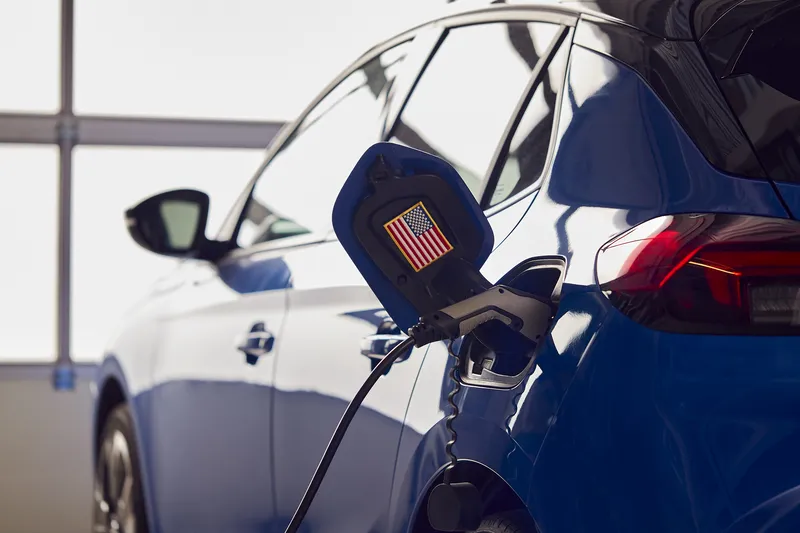The Intelligent Transportation Society of America’s (ITS America) President and CEO Regina Hopper has applauded the announcement by US Transportation Secretary Anthony Foxx that the Obama Administration has proposed US$4 billion over 10 years for automated and connected vehicle pilot projects that accelerate vehicle safety technologies.
Secretary Foxx also announced that the US DOT is removing potential roadblocks to the integration of innovative, transformational automotive technology that can signific
January 15, 2016
Read time: 3 mins
The Intelligent Transportation Society of America’s (560 ITS America) President and CEO Regina Hopper has applauded the announcement by US Transportation Secretary Anthony Foxx that the Obama Administration has proposed US$4 billion over 10 years for automated and connected vehicle pilot projects that accelerate vehicle safety technologies.
Secretary Foxx also announced that the US DOT is removing potential roadblocks to the integration of innovative, transformational automotive technology that can significantly improve safety, mobility, and sustainability.
“We are on the cusp of a new era in automotive technology with enormous potential to save lives, reduce greenhouse gas emissions, and transform mobility for the American people,” said Foxx. “Today’s actions and those we will pursue in the coming months will provide the foundation and the path forward for manufacturers, state officials, and consumers to use new technologies and achieve their full safety potential.”
The President’s FY17 budget proposal would provide nearly US$4 billion over 10 years for pilot programs to test connected vehicle systems in designated corridors throughout the country, and work with industry leaders to ensure a common multistate framework for connected and autonomous vehicles.
Hopper said, “ITS America applauds Secretary Foxx and the Administration for accelerating the adoption of advanced vehicle technologies, such as vehicle-to-vehicle (V2V) and vehicle-to-infrastructure (V2I) communication that will significantly reduce traffic fatalities and injuries and ensure America continues to lead in automotive and transportation innovation.
“Automated and connected vehicle technologies will save thousands of lives each year and bring us closer to our goal of zero deaths on America’s roads.
“Congress took a critical step in the FAST Act to encourage innovation and support the deployment of these and other Intelligent Transportation Systems (ITS). This announcement represents the collective commitment of the transportation, technology and highway safety communities to tackle the challenges and harness the opportunities before us to transform safety and mobility in America.”
Secretary Foxx also unveiled policy guidance that updates the834 National Highway Traffic Safety Administration’s (NHTSA) 2013 preliminary policy statement on autonomous vehicles. The new guidance, released today, reflects the reality that the widespread deployment of fully autonomous vehicles is now feasible.
“NHTSA is using all of its available tools to accelerate the deployment of technologies that can eliminate 94 per cent of fatal crashes involving human error,” said NHTSA Administrator Mark Rosekind. “We will work with state partners toward creating a consistent national policy on these innovations, provide options now and into the future for manufacturers seeking to deploy autonomous vehicles, and keep our safety mission paramount at every stage.”
Secretary Foxx also announced that the US DOT is removing potential roadblocks to the integration of innovative, transformational automotive technology that can significantly improve safety, mobility, and sustainability.
“We are on the cusp of a new era in automotive technology with enormous potential to save lives, reduce greenhouse gas emissions, and transform mobility for the American people,” said Foxx. “Today’s actions and those we will pursue in the coming months will provide the foundation and the path forward for manufacturers, state officials, and consumers to use new technologies and achieve their full safety potential.”
The President’s FY17 budget proposal would provide nearly US$4 billion over 10 years for pilot programs to test connected vehicle systems in designated corridors throughout the country, and work with industry leaders to ensure a common multistate framework for connected and autonomous vehicles.
Hopper said, “ITS America applauds Secretary Foxx and the Administration for accelerating the adoption of advanced vehicle technologies, such as vehicle-to-vehicle (V2V) and vehicle-to-infrastructure (V2I) communication that will significantly reduce traffic fatalities and injuries and ensure America continues to lead in automotive and transportation innovation.
“Automated and connected vehicle technologies will save thousands of lives each year and bring us closer to our goal of zero deaths on America’s roads.
“Congress took a critical step in the FAST Act to encourage innovation and support the deployment of these and other Intelligent Transportation Systems (ITS). This announcement represents the collective commitment of the transportation, technology and highway safety communities to tackle the challenges and harness the opportunities before us to transform safety and mobility in America.”
Secretary Foxx also unveiled policy guidance that updates the
“NHTSA is using all of its available tools to accelerate the deployment of technologies that can eliminate 94 per cent of fatal crashes involving human error,” said NHTSA Administrator Mark Rosekind. “We will work with state partners toward creating a consistent national policy on these innovations, provide options now and into the future for manufacturers seeking to deploy autonomous vehicles, and keep our safety mission paramount at every stage.”










